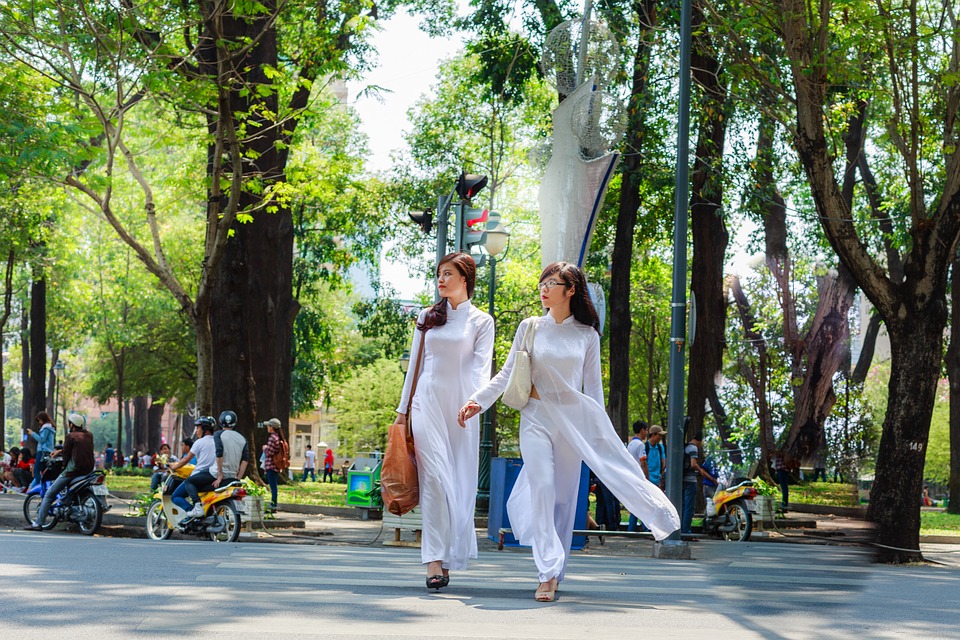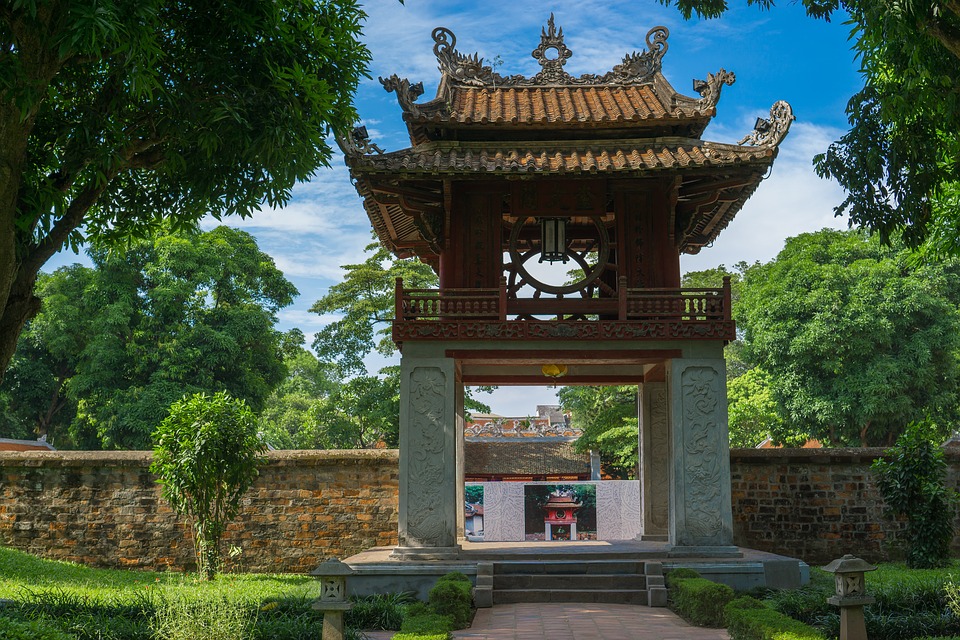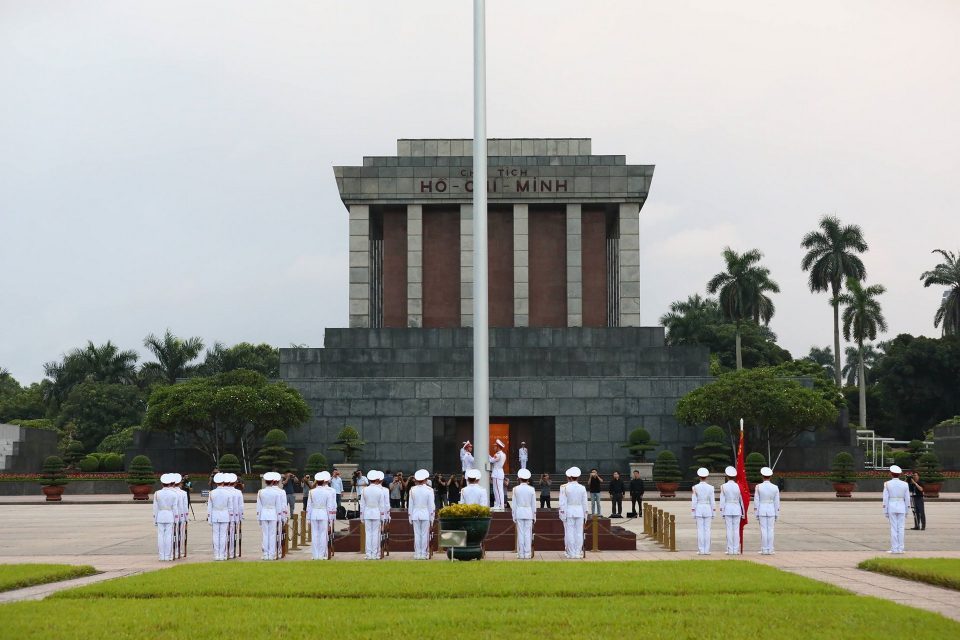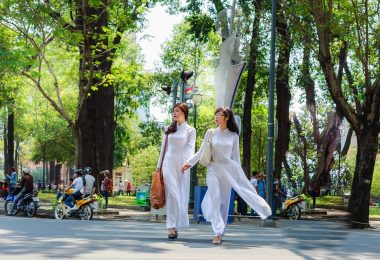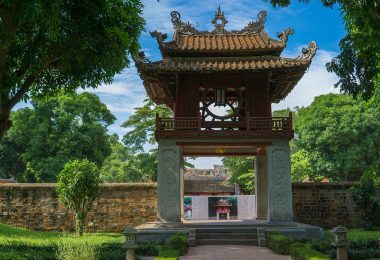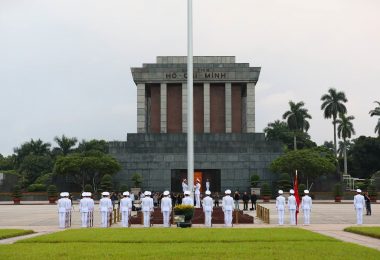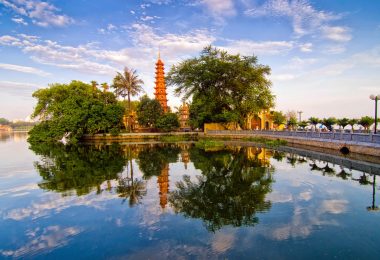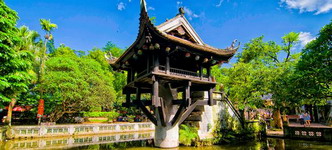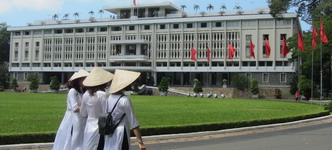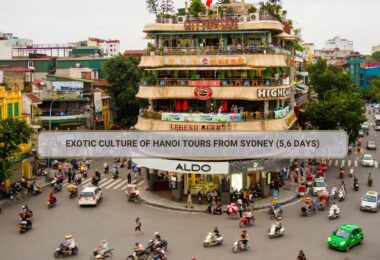Vietnam’s capital, Hanoi, combines the past, present, and future in a city rich in millennia of cultural traditions. The architecture, food, and culture of the city are all influenced by its rich past. When you visit, take the architecture tours of Hanoi to learn about the city’s remarkable architectural history, which includes the majesty of old citadels, the grace of French colonial sites, and the energy of contemporary skyscrapers.
Explore artifacts from the feudal era
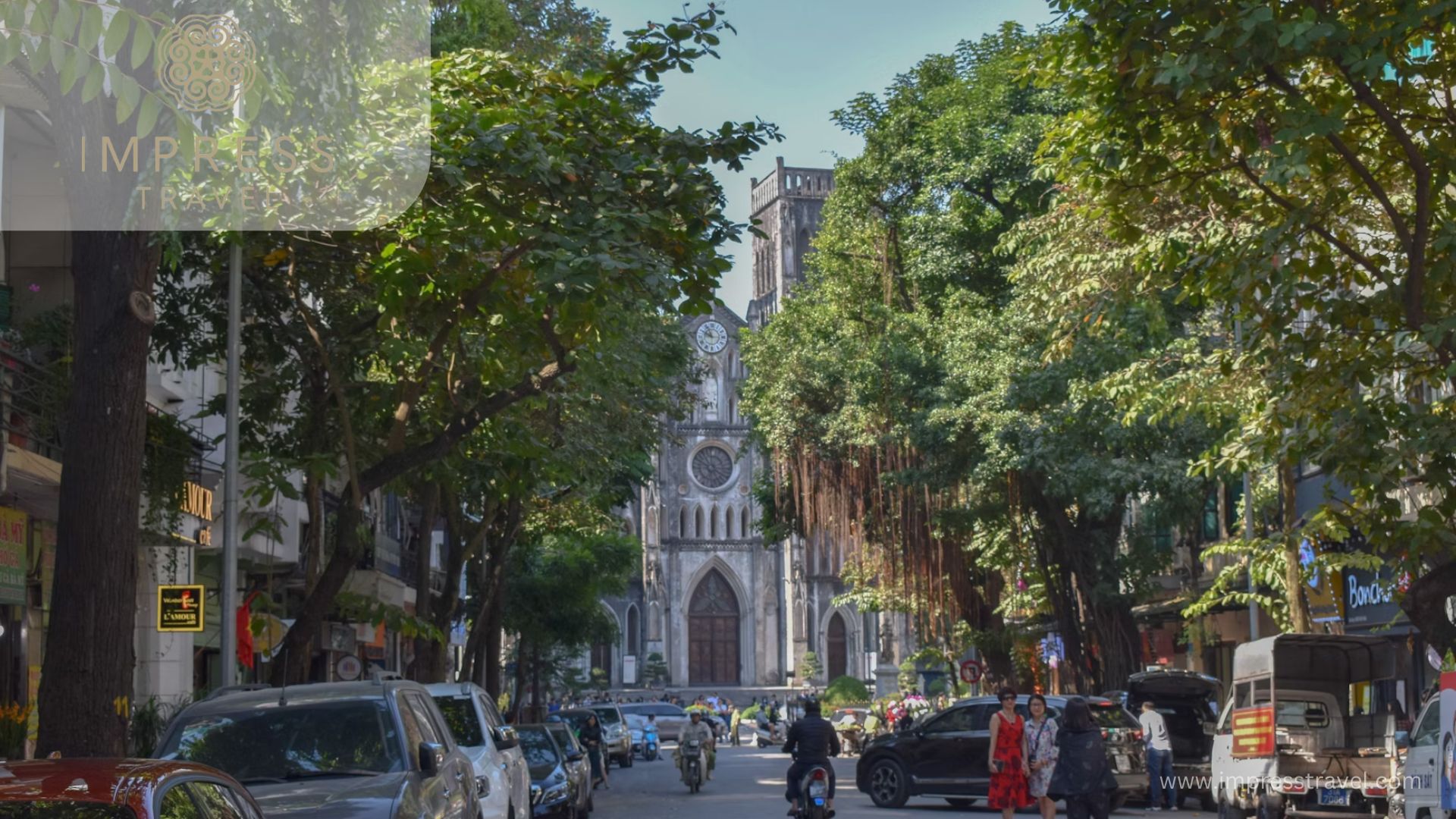
St. Joseph’s Cathedral
The architecture tours will take you a trip back in time and take in the opulence of Hanoi’s feudal architecture. You could almost believe you have stumbled into an ancient dynasty in Hanoi’s Old Quarter, a labyrinth of winding lanes and secret courtyards with an abundance of architecture reflecting the city’s rich past. Join us to experience architecture tours in Hanoi with the outstanding works below.
The Temple of Literature
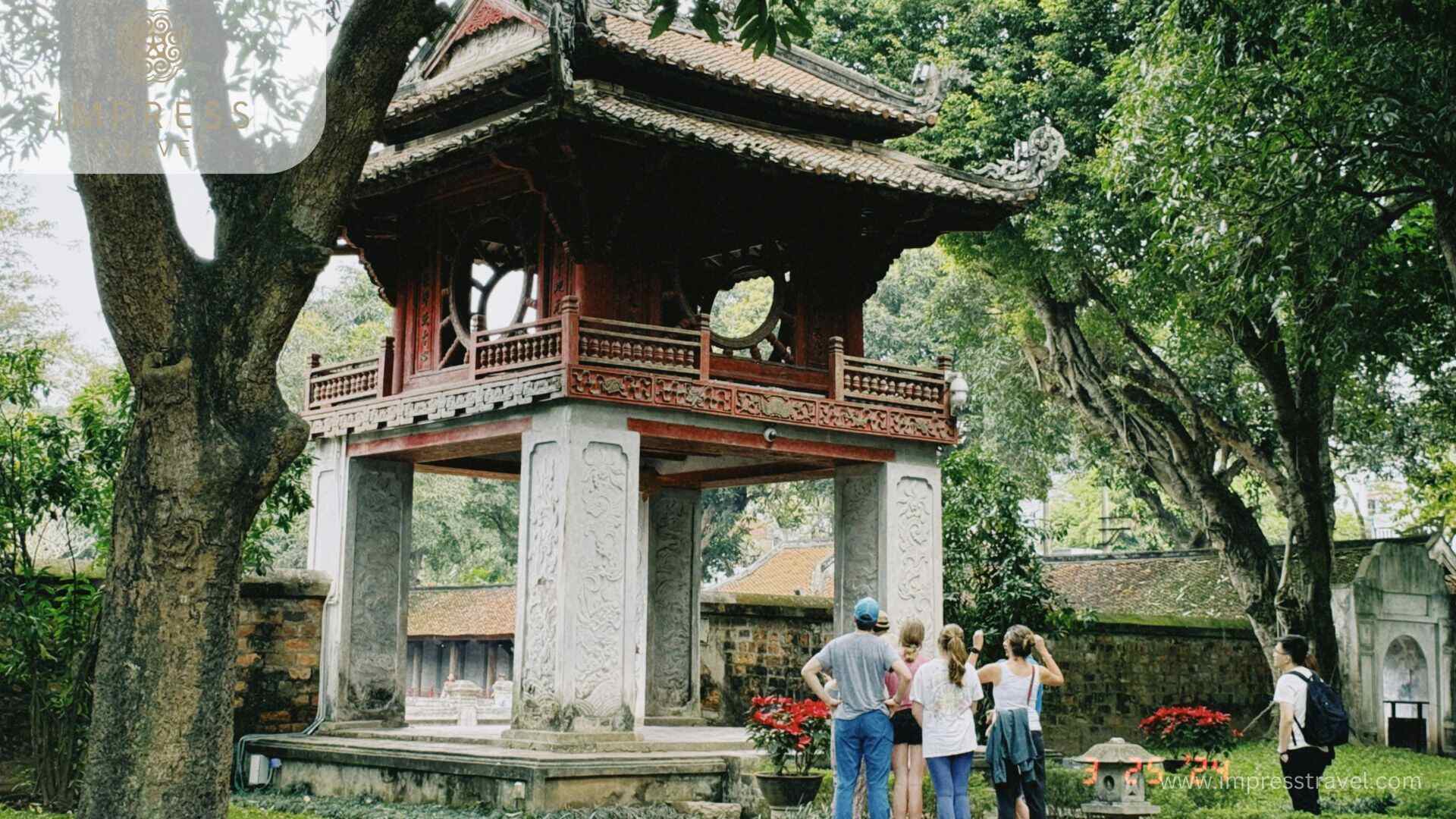
The Temple of Literature
The Temple of Literature is an outstanding construction in Hanoi that cannot be ignored on architecture tours. The Temple of Literature relic complex spans around 54,331 square meters and is situated south of the historic Thang Long Citadel. According to historical sources, Ly Thanh Tong ordered the construction of Van Mieu in 1070. The architectural complex of The Temple of Literature comprises Van Lake, the Temple of Literature Complex, and Giam Garden, with the main architecture being the Temple of Literature (the place of worship of Confucius) and Quoc Tu Giam (the first university in Vietnam). This is an ideal location to take architecture tours to gain a greater understanding of the rich history and architectural style of the constructions in Hanoi.
The architectural characteristics of the relic have altered in distinct ways throughout the duration of nearly a millennium. Today, the relic still contains several architectural characteristics from the Le and Nguyen Dynasties. The state provided funding for the rehabilitation of the new Thai Hoc home between 1999 and 2000. On May 10, 2012, the Prime Minister recognized it as a special national monument.
The major part is the Temple of Literature complex, which is separated into five layers of space with various architectural styles and has a symmetrical layout of each area following the traditional North-South axis. The courtyard is enclosed by brick walls. There are three doors – a main door in the center and two side doors – that serve as communication points between them. The gates are Van Mieu, Dai Trung, Dai Thanh, and Thai Hoc, in that order, from the outside to the inside.
The Temple of Literature can be split into two primary sections based on the architectural purposes it serves: the National Academy, which serves as a school for the training of Confucian scholars, and the Temple of Confucius, which is devoted to the veneration of Confucian sages. Furthermore, the Temple of Confucius complex houses a temple honoring the Mother Goddess and a shrine honoring the god of the land. Numerous items of significant cultural, historical, and scientific significance are still preserved at the site, including a system of ceremonial objects, statues, antiquities, and – most importantly – 82 doctorate steles that have been designated by UNESCO as “World Documentary Heritage."
After more than 700 years of operation and the development of thousands of creative individuals for the country, the National University of Vietnam’s Temple of Literature is currently a popular tourist site for both local and international visitors. It also acts as a site for the yearly poetry festivals, which take place on the fifteenth day of the first lunar month, as well as a location to recognize and celebrate outstanding pupils. The Temple of Literature is truly a suitable place for you to learn about the values of Hanoi’s history, culture and architecture on architecture tours.
One Pillar Pagoda

One Pillar Pagoda
To continue the architecture tours, travel to One Pillar Pagoda, also known as Mot Cot Pagoda, Dien Huu Pagoda, or Lien Hoa Dai. The structure was built in 1049 by King Ly Thai Tong. This well-known Buddhist architectural masterpiece is located in the heart of Linh Chieu Lake and has a square shrine perched on a stone pillar.
According to legend, after having a dream, King Ly Thai Tong ordered the construction of the pagoda, which is said to be in the image of the Goddess of Mercy, Quan Am, perched upon a lotus bloom. An obvious example of Ly Dinasty’s work is the pagoda’s combination of painting, carving, and sculpture.
When visiting One Pillar Pagoda, tourists can plainly see the Tam Quan gate, which is marked with a horizontal plaque with the three characters “Dien Huu Tu". The One Pillar Pagoda’s initial construction was held up by wooden boards that were securely fastened to the stone pillar. The Lien Hoa platform, the pagoda roof, and the pillar make up the pagoda’s structure.
The pagoda is reflected on the surface of Linh Chieu Lake like a mirror. The One Pillar Pagoda is square, with three meters on each side. The pillar, which is made up of two joined blocks, is four meters high and 1.2 meters in diameter. Eight wooden wings, resembling a lotus blossom in bloom, are stretched out across the pillar’s body. A relief of a dragon’s head may be seen on the pagoda’s sloping roof. The temple is reached after ascending 13 steps, and inside is a figure of the Goddess of Mercy, Quan Am, sitting atop a lotus blossom that has been painted with gold leaf and red lacquer.
One Pillar Pagoda has undergone multiple restorations and repairs, but it has managed to maintain its unique characteristics. The pagoda was named the “Most Unique Architectural Pagoda in Asia" in 2012. A visit to the One Pillar Pagoda will be an amazing experience for you on the architecture tours. Come here to enjoy the unique architectural beauty while also finding peace of mind.
The beauty of French architecture may be seen in the structures of Hanoi
Vietnam National Museum of Fine Arts
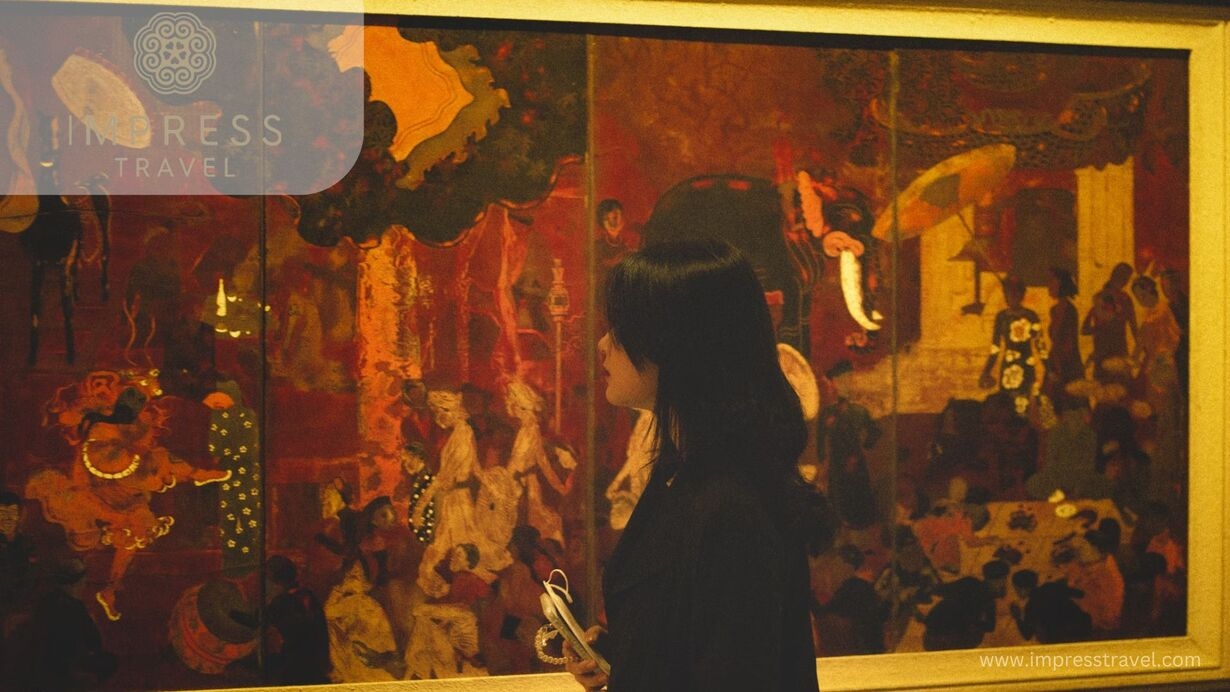
Vietnam National Fine Arts Museum
The next destination for architecture tours that we suggest to you is the Vietnam National Museum of Fine Art. Located behind the One Pillar Pagoda, the Vietnam National Museum of Fine Arts is the ideal fusion of traditional Vietnamese design features with French classical architecture. During the French colonial era, this site served as a school for the daughters of French officials in Indochina. During the August Revolution of 1945, the Ministry of Culture seized possession of the building and started restoring it so that it could be used as a location for the storage and exhibition of valuable artwork. On the architecture tours in Hanoi, you can view French architecture at this well-known architectural tourist site.
The refurbishments at the Museum of Fine Arts were formally launched in 1962. This was a challenging project because the original architecture of the building was strongly influenced by Western architecture, featuring a pattern of huge windows, balconies, hallways, and small rooms. Making this space into a suitable art museum required creativity and attention to detail.
A noteworthy example of the building’s architecture is the front and roof of the Vietnam National Museum of Fine Arts, which include sturdy pillars and full-bodied blocks in an East Asian style. Under the pillars of the lobby is a lotus pedestal that showcases the architectural style of the Ly dynasty from the 11th century. Vietnamese communal buildings from the 16th to 17th centuries are known for their artistic magnificence, which can be recreated in part thanks to the quality wood used to carve decorative components like roofs, baluster bases, and pillar bases. Parts of the barriers that separated the little rooms were also removed to create a spacious area perfect for art shows. The colors used in the museum’s architecture, such as lime, wood yellow, moss green, and white stone, are all inspired by natural shades.
The main door of the museum has a similar unique design, and the wood is carved with a very realistic picture of a phoenix holding a scroll and soaring over the waves. The exterior lime coating of the structure was carefully planned to give it a pleasing look. Thanks to the efforts of architects and artists, the Vietnam National Museum of Fine Arts was completed in 1966 and is today a highly-liked tourist destination for individuals who appreciate architecture as well as an important cultural landmark in Hanoi, the country’s capital. In addition to housing a substantial collection of artwork, this location serves as a symbol of the interchange of ideas between tradition and modernity, as well as between the East and the West. This is a significant location for the excellent architecture tours.
Hanoi Opera House

Hanoi Opera House
The architecture tours will take you to the Hanoi Opera House, a stunning recreation of the Palais Garnier in Paris, which is housed in the French architectural complex. The ornate exterior, embellished with elaborate sculptures and ironwork, is a remarkable architectural work that combines the architectural style of the Paris Opera House and the Tuylory Palace with the architecture of the ancient Greek Corinth.
There was a big stage and a 24 by 24 meter main auditorium within the opera house that could accommodate 870 people at the time. The seats were coated in leather, with some of them also having velvet coverings. There are numerous tiny rooms on the middle floor for patrons with tickets. A spacious main hall leads from the middle staircase to the second floor. On both sides are passageways and auxiliary stairs. There is an administration area, two rehearsal spaces, a library, eighteen actor dressing rooms, and a conference room located behind the opera house. A magnificent mirror room is located on the second floor in front. Save the Hanoi Opera House on your list of architecture tours destinations to experience the unique cultural and artistic values of Vietnam!
Summary
After the architecture tours of Hanoi, you’ll have a better understanding of the city’s fascinating architectural legacy, which tells the tale of its rich history and dynamic culture. Hanoi’s architecture is a tribute to its long legacy, ranging from the majesty of old citadels to the beauty of French colonial buildings and the energy of contemporary skyscrapers. Take the architecture tours of Hanoi and let the city’s architectural marvels inspire you.
Don’t forget to regularly follow our Facebook page and Website for more interesting information about traveling to Hanoi and to book Hanoi tours at the best prices.





































